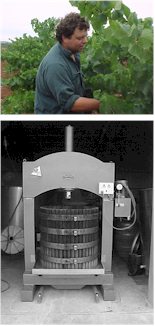


The genesis behind Tait Wines was Giovanni Tait (1927-1997). Giovanni learned cooperage from his father and grandfather before migrating to Australia from Italy in 1957. He took up work as a cooper in the Barossa. His skill and craftsmanship at his chosen trade led him to B Seppelts and Sons where he took an active role in the vinification and maturation of wine in the finest oak casks.

Giovanni's vision was to establish a traditional winery that practised the old winemaking methods to produce hand crafted wines that were powerful in depth, flavour and taste. It was not until his sons grew older that his dream became a reality. With his sons, he founded Tait Wines.
Each year, the family acknowledges their Giovanni Tait's vision by dedicating the estate grown Cabernet Sauvignon in his memory. A reflection of Giovanni's remarkable personal attributes, it is a wine of maturity, depth of character and vitality.
Tait knows that all quality wine starts in the vineyard. The Barossa fruit they use is always from very low yielding sites, displaying highly concentrated flavours and aromas. Tait produce all wine on site to ensure quality and consistency. Traditional winemaking methods are utilised, including open fermentation, extended maceration and basket pressing. The finished wines display the indelible marque of uncompromising excellence.
The growth in stature for Tait Wines has come about fairly quickly and directly reflects the dedication and vision of Bruno Tait. Bruno's wines have received highly favourable reviews overseas ( 93 Parker points for the 2001 Basket Pressed Shiraz, 92 Parker points for the 2002 The Ball Buster, 90 Parker points for the 2001 Basket Pressed Cabernet Sauvignon)
Bruno's efforts epitomize the Barossa style, big and rich, full of flavour. The attention to detail and the close relationship with his growers ensures that Bruno can access the highest quality fruit (the old vine material is from vines 50-80 years old) which he handcrafts into wines that are reflection of his own personality, big and generous with loads of personality. Bruno also works in close partnership with his exporters, essential to maintain his presence in the competitive international market, whilst remaining true to his own style.

























